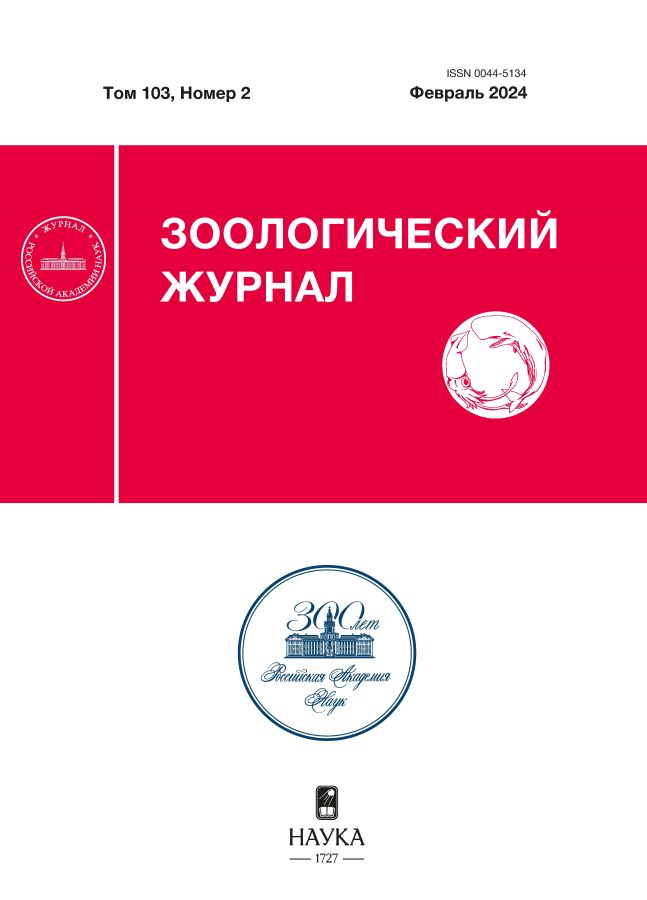Three new species of oribatid mites of the superfamily oripodoidea (acari, oribatida) from Vietnam
- Авторлар: Ermilov S.G.1, Salavatulin V.M.1,2, Kontschán J.3,4
-
Мекемелер:
- Tyumen State University
- Joint Russian-Vietnamese Tropical Research and Technological Center
- Plant Protection Institute, Hungarian Academy of Sciences
- Széchenyi István University
- Шығарылым: Том 103, № 2 (2024)
- Беттер: 3-13
- Бөлім: ARTICLES
- URL: https://modernonco.orscience.ru/0044-5134/article/view/654313
- DOI: https://doi.org/10.31857/S0044513424020011
- EDN: https://elibrary.ru/VXUQQE
- ID: 654313
Дәйексөз келтіру
Аннотация
Three new species of oribatid mites (Oribatida) of the superfamily Oripodoidea – Phauloppia differens sp. n. (Oribatulidae), Oripoda operta sp. n. (Oripodidae) and Pirnodus concavus sp. n. (Oripodidae) – are described, based on adults collected from the bark and tree branches of Dipterocarpus alatus and Haldina cordifolia in southern Vietnam.
Негізгі сөздер
Толық мәтін
Авторлар туралы
S. Ermilov
Tyumen State University
Хат алмасуға жауапты Автор.
Email: ermilovacari@yandex.ru
Ресей, Tyumen, 625003
V. Salavatulin
Tyumen State University; Joint Russian-Vietnamese Tropical Research and Technological Center
Email: v.salavatulin@gmail.com
Ресей, Tyumen, 625003; Southern Branch, Ho Chi Minh City, Vietnam
J. Kontschán
Plant Protection Institute, Hungarian Academy of Sciences; Széchenyi István University
Email: kontschan.jeno@atk.hu
Венгрия, Budapest, H-1025 Hungary; Mosonmagyaróvár, 9026
Әдебиет тізімі
- Aoki J., Yamamoto Y., 2007. New arboreal oribatids (Arachnida, Acari, Oribatida, Oripodidae) collected from broadleaf evergreen trees in Central Japan // Species Diversity. V. 12. P. 271–277.
- Corpuz-Raros L., Ermilov S.G., 2020. Catalogue of oribatid mites (Acari: Oribatida) from Continental Southeast Asia // Zootaxa. V. 4893. P. 1–216.
- Ermilov S.G., Salavatulin V.M., 2023. New arboreal mite species of Oribatulidae and Oripodidae (Acari, Oribatida, Oripodoidea) from Vietnam // International Journal of Acarology. V. 49. P. 283–291.
- Grandjean F., 1950. Observations sur les Oribates (21e série) // Bulletin du Museum nationale d’Histoire Naturelle (2). V. 22. P. 344–351.
- Grandjean F., 1956. Sur deux espéces nouvelles d’Oribates (Acariens) apparentées à Oripoda elongata Banks 1904 // Archives de Zoologie experimentale et generale. V. 93. P. 185–218.
- Norton R.A., 1977. A review of F. Grandjean’s system of leg chaetotaxy in the Oribatei (Acari) and its application to the family Damaeidae // In: Dindal D.L., editor. Biology of oribatid mites. Syracuse: SUNY College of Environmental Science and Forestry. P. 33–61.
- Norton R.A., Behan-Pelletier V.M., 2009. Oribatida // A Manual of Acarology (TX). Lubbock: Texas Tech University Press. P. 430–564.
- Pérez-Íñigo C., 1993. Acari. Oribatei, Poronota // In: Ramos M.A. et al., editors. Fauna Iberica, Volume 3. Madrid: Museo Nacional de Ciencias Naturales Press. P. 1–320.
- Salavatulin V., 2019. Microhabitat distribution of arboreal oribatid mites (Oribatida), associated with the Siberian pine (Pinus sibirica) of Western Siberia // Experimental and Applied Acarology. V. 78. P. 469–483.
- Salavatulin V.M., Ermilov S.G., Kudrin A.A., Nguyen T.D., 2022. Initial data on arboreal oribatid mites (Acari, Oribatida) from Vietnam // Acarina. V. 30. P. 103–108.
- Subías L.S., 2022. Listado sistemático, sinonímico y biogeográfico de los ácaros oribátidos (Acariformes: Oribatida) del mundo (excepto fósiles) // Monografías Electrónicas S.E.A. V. 12. P. 1–538.
- Travé J., 1959. Dimorphisme sexuel chez Pirnodus detectidens Grandjean (Acariens, Oribates). Notes écologiques et éthologiques // Vie et Milieu. V. 9. P. 454–468.
Қосымша файлдар















